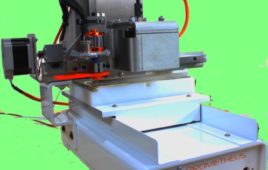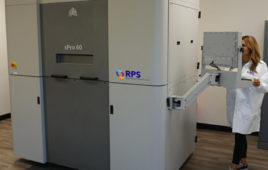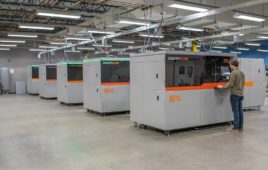Scientists at the University of Sydney have demonstrated the ability to “see” the future of quantum systems, and used that knowledge to preempt their demise, in a major achievement that could help bring the strange and powerful world of quantum technology closer to reality.
The applications of quantum-enabled technologies are compelling and already demonstrating significant impacts — especially in the realm of sensing and metrology. And the potential to build exceptionally powerful quantum computers using quantum bits, or qubits, is driving investment from the world’s largest companies.
However a significant obstacle to building reliable quantum technologies has been the randomisation of quantum systems by their environments, or decoherence, which effectively destroys the useful quantum character.
The physicists have taken a technical quantum leap in addressing this, using techniques from big data to predict how quantum systems will change and then preventing the system’s breakdown from occurring.
The research is published today in Nature Communications.
“Much the way the individual components in mobile phones will eventually fail, so too do quantum systems,” writes the paper’s senior author, Professor Michael J. Biercuk of the university’s School of Physics and chief investigator at the Australian Research Council’s Centre for Engineered Quantum Systems. “But in quantum technology the lifetime is generally measured in fractions of a second, rather than years.”
Biercuk says his group had demonstrated it was possible to suppress decoherence in a preventive manner. The key was to develop a technique to predict how the system would disintegrate.
“Humans routinely employ predictive techniques in our daily experience; for instance, when we play tennis we predict where the ball will end up based on observations of the airborne ball,” he says. “This works because the rules that govern how the ball will move, like gravity, are regular and known. But what if the rules changed randomly while the ball was on its way to you? In that case it’s next to impossible to predict the future behavior of that ball.
“And yet this situation is exactly what we had to deal with because the disintegration of quantum systems is random. Moreover, in the quantum realm observation erases quantumness, so our team needed to be able to guess how and when the system would randomly break. We effectively needed to swing at the randomly moving tennis ball while blindfolded.”
The team turned to machine learning for help in keeping their quantum systems — qubits realised in trapped atoms — from breaking.
What might look like random behavior actually contained enough information for a computer program to guess how the system would change in the future. It could then predict the future without direct observation, which would otherwise erase the system’s useful characteristics.
The predictions were remarkably accurate, allowing the team to use their guesses preemptively to compensate for the anticipated changes.
Doing this in real time allowed the team to prevent the disintegration of the quantum character, extending the useful lifetime of the qubits.
“We know that building real quantum technologies will require major advances in our ability to control and stabilise qubits – to make them useful in applications,” Biercuk says.
The techniques apply to any qubit, built in any technology, including the special superconducting circuits being used by major corporations.
“We’re excited to be developing new capabilities that turn quantum systems from novelties into useful technologies. The quantum future is looking better all the time,” says Biercuk.
Filed Under: Rapid prototyping




